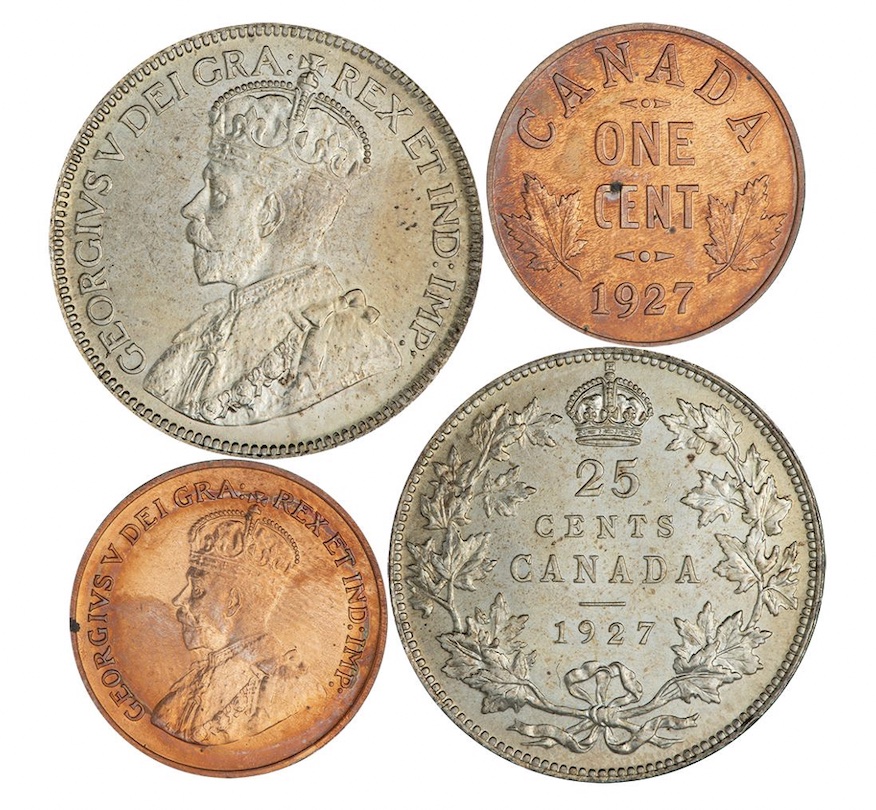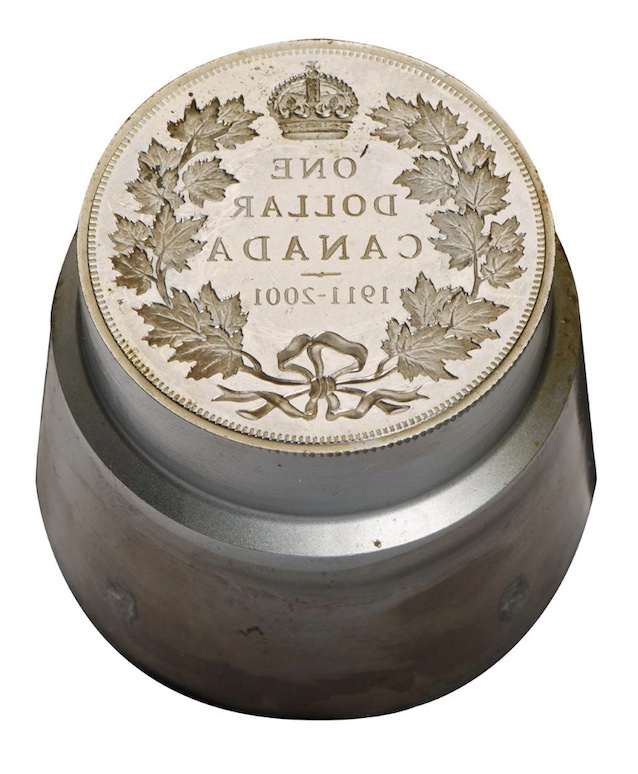What do a 1,700 year old Roman coin and a Canadian penny worth thousands of dollars have in common? They’ve just been added to the collection of historical currency held by the Bank of Canada Museum in downtown Ottawa.
Some of the museum’s most significant artifact acquisitions in 2024 were recently highlighted in a curator’s blog post detailing the latest additions to a national collection of more than 130,000 historical coins, bank notes and other objects.

Among the items, according to David Bergeron — curator of the National Currency Collection at the Bank Street museum — is a “once in a lifetime” pair of “specimen” Canadian coins from 1927 worth $40,000.
“They may not seem that unusual, but they’re truly one of a kind,” Bergeron said. “The last time these coins came up for sale was in 2003. When we had the chance to acquire them, we took it.”
The specimens, a one-cent and 25-cent piece, feature the head of King George V. They join a five-cent piece that’s already part of the collection.
Bergeron says specimen coins like this often entered the market by accident, or were given out as gifts to visitors to the mint before their rarity and value was recognized.

“In 1927, the mint did not have the foresight to keep these types of coins,” Bergeron said. “So, they were given out to dignitaries or officials, people visiting the mint. They get sent around, but over time, they come back to Canada or they get into Canadian collections.”
But a coin worth more than 1,000 times its face value was not all that caught the eye of museum curators over the past year. A huge collection of “master dies” — the engraved stamps used by the Royal Canadian Mint to manufacture coins — is creating a stir, as well.
Among those impressed with the acquisition is Jacob Lipson, owner of Jacob Lipson Rare Coins on Daly Avenue and president of the Ottawa Numismatics Society.
“My passion for numismatics began as a part-time job at a coin shop in Montreal, which I got through my friend who was an avid collector,” Lipson said. “I quickly fell in love with the hobby and decided early on to pursue it as a career.”

Lipson said some of the most interesting acquisitions last year by the Bank of Canada Museum aren’t necessarily the coins themselves, but the tools used to make them.
“Everyone is going to have their own interests, but the most interesting things listed in the blog post for me are the hundreds of Royal Canadian Mint master dies,” Lipson said. “These dies are used to strike circulation and non-circulating collector coins.”
“The transfer that we got from the Royal Canadian Mint was a very important acquisition,” Bergeron said. “Because it contains hundreds of working dies and things related to the production of money. The dies themselves are all unique.”
Other acquisitions, especially those that are thousands of years old, reveal the deep history of currency. One acquisition in particular features the face of an obscure Roman emperor named Laelianus.
“This coin is from one of the many emperors from the period known as the Third Century Crisis,” said Dr. Jaclyn Neel, an associate professor of Greek and Roman Studies at Carleton University.




